
Flashcards are one of the greatest, most versatile tools in all of studying. They are useful for learners of all ages, from toddlers to college students, and they are used in a wide range of topics, from basic math functions to hyper-specific vocabulary terms.
Intro to Flashcards
I’m betting you’ve used flashcards before, but if you haven’t, they are essentially just notecards with writing on both sides. On one side is the problem, and on the other side is the solution. So, for multiplication tables, “4×4” would be on one side and “16” would be on the other.
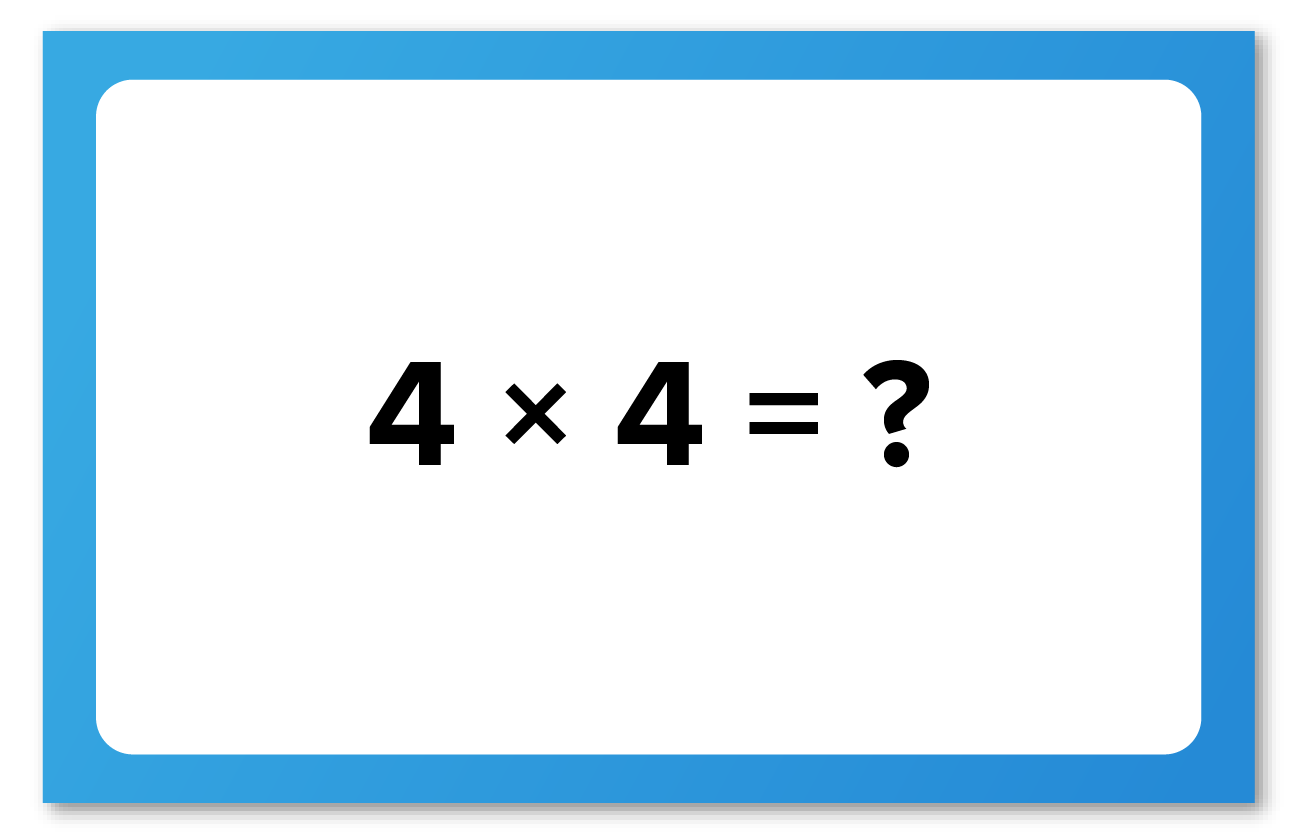
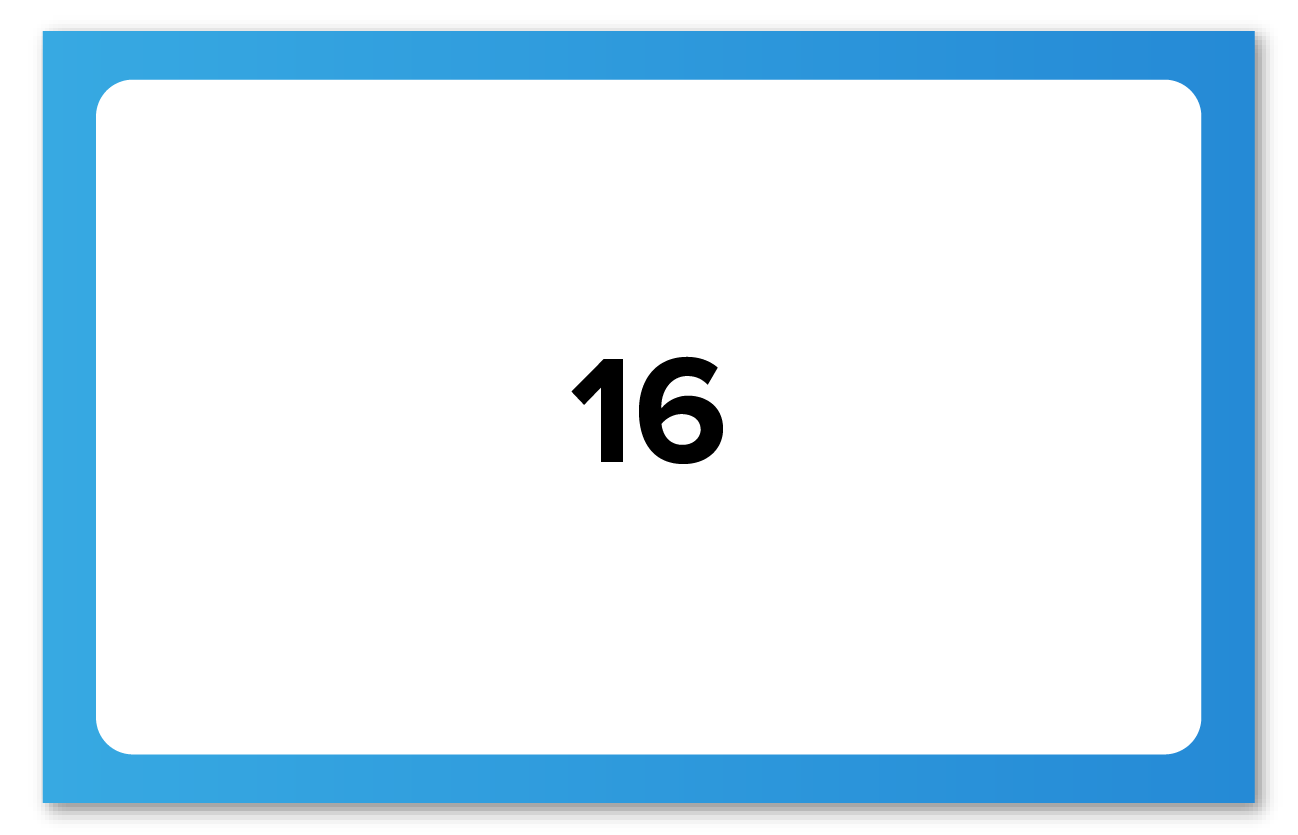
But for vocabulary, you’d have the term itself on one side, “surmise,” and the definition on the back, “to reach a conclusion without certain or strong evidence.”

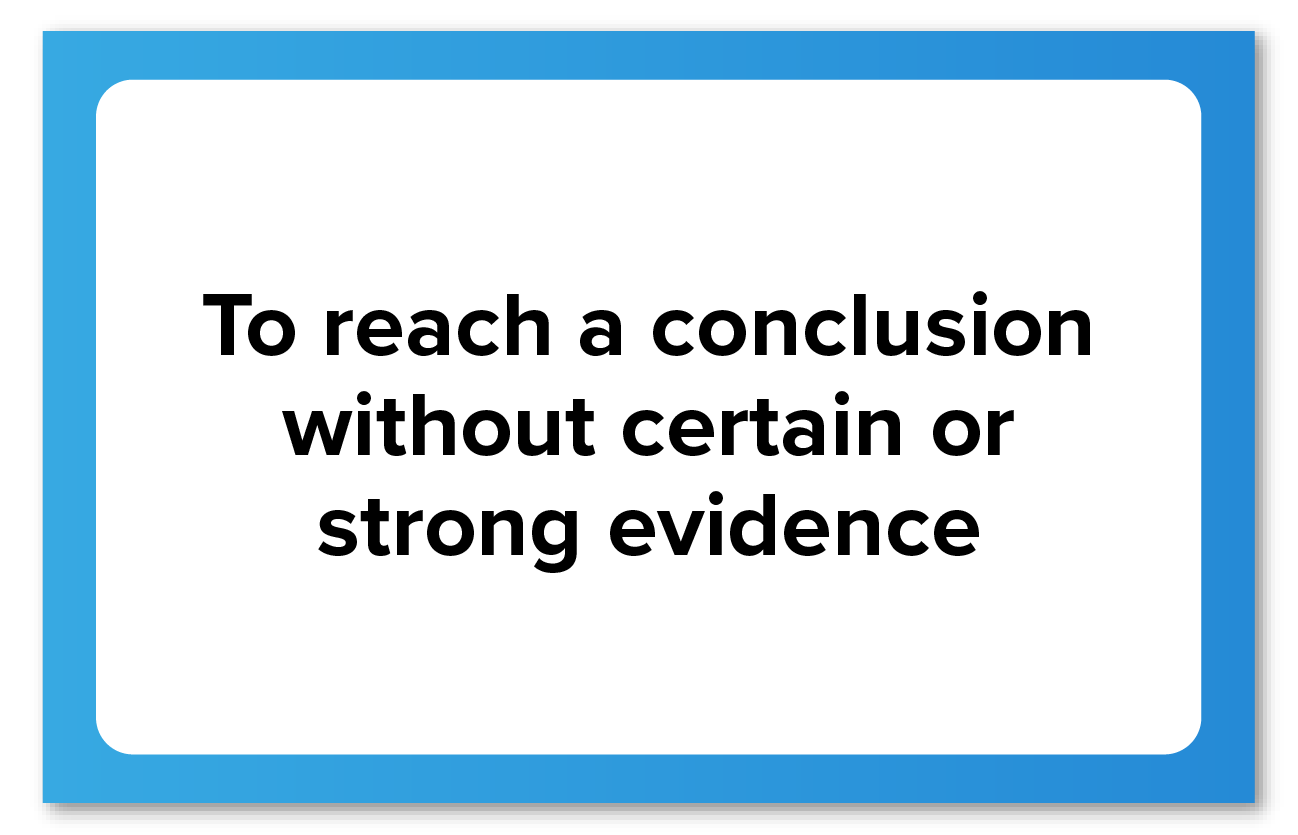
To practice with flashcards, look at the front, then guess what’s on the back. Finally, flip it over to see if you’re correct. This is an extremely simple and effective way to study. By obscuring part of the information, we’re practicing our ability to recall on command, which is basically what you’re doing every time you take a test.
However, just like any other type of tool, you can use flashcards more effectively as a learning tool when you develop great techniques. Anybody can pick up an ax and swing it at a piece of wood, but a seasoned lumberjack can take the same simple tool and make it look impressively easy. Today, we’re going to help you get more out of your flashcards with the Leitner System.
The Leitner System
The Leitner System is named for its creator, Sebastian Leitner, a German commentator. The system was first described in Leitner’s 1972 book So Lernt Man Lernen, which translates to “How to Learn to Learn.”
Put simply, the Leitner System groups your flashcards into categories based on how well you know the information. This helps you master topics that you’re struggling with while not getting caught up on things you already understand.
You wouldn’t scrub a dish five times after it was already clean, so why would you study a flashcard five times once you already know the information?
Let’s go through a step-by-step breakdown of the Leitner System in action.
Materials
To get started with the Leitner System, you won’t need many materials!
First, you’ll need your flashcards prepared. The Leitner System is especially helpful for massive, mind-numbing quantities of information, so the more flashcards, the better!
Then, you’ll need a way to sort the cards into three groups. This could be three little boxes, sandwich bags, rubber bands, paperclips, or whatever works for you. Here today, we have these three pieces of paper. These three groups should be labeled in some way, indicating the three categories: Every Day, Tuesday and Thursday, and Friday.

Day 1
For this example, we’ll start on Monday, although you can tweak the system to begin whichever day you’re prepared to start!
On day one, you’ll go through every flashcard in the stack. There are two outcomes when reviewing each flashcard: Either you can easily remember exactly what it says on the other side, or you’re unable to recall the correct answer.
For flashcards that you got right, put them in the Tuesday and Thursday group.
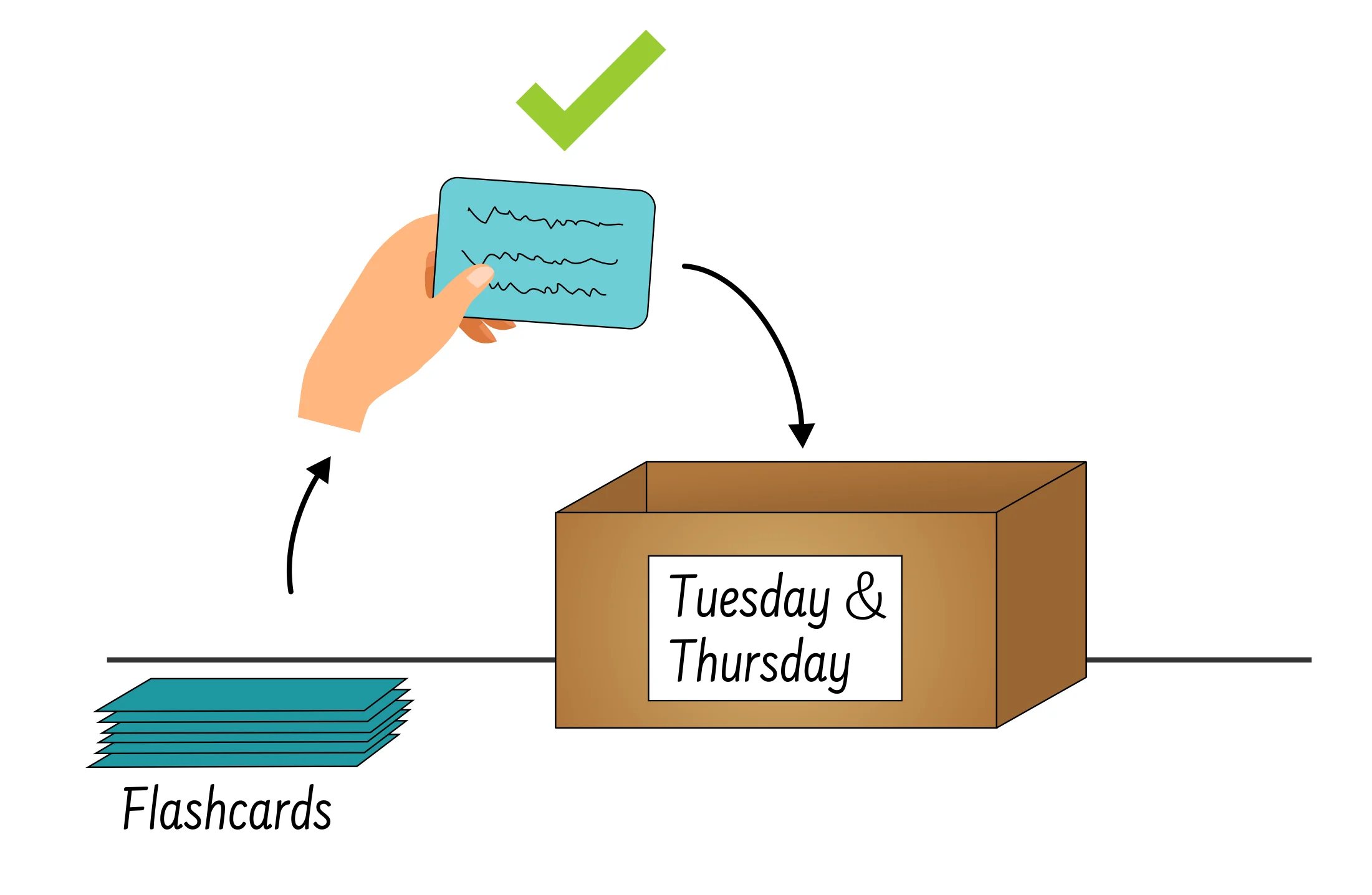
For ones you struggled with or answered incorrectly, put them in the Every Day group.
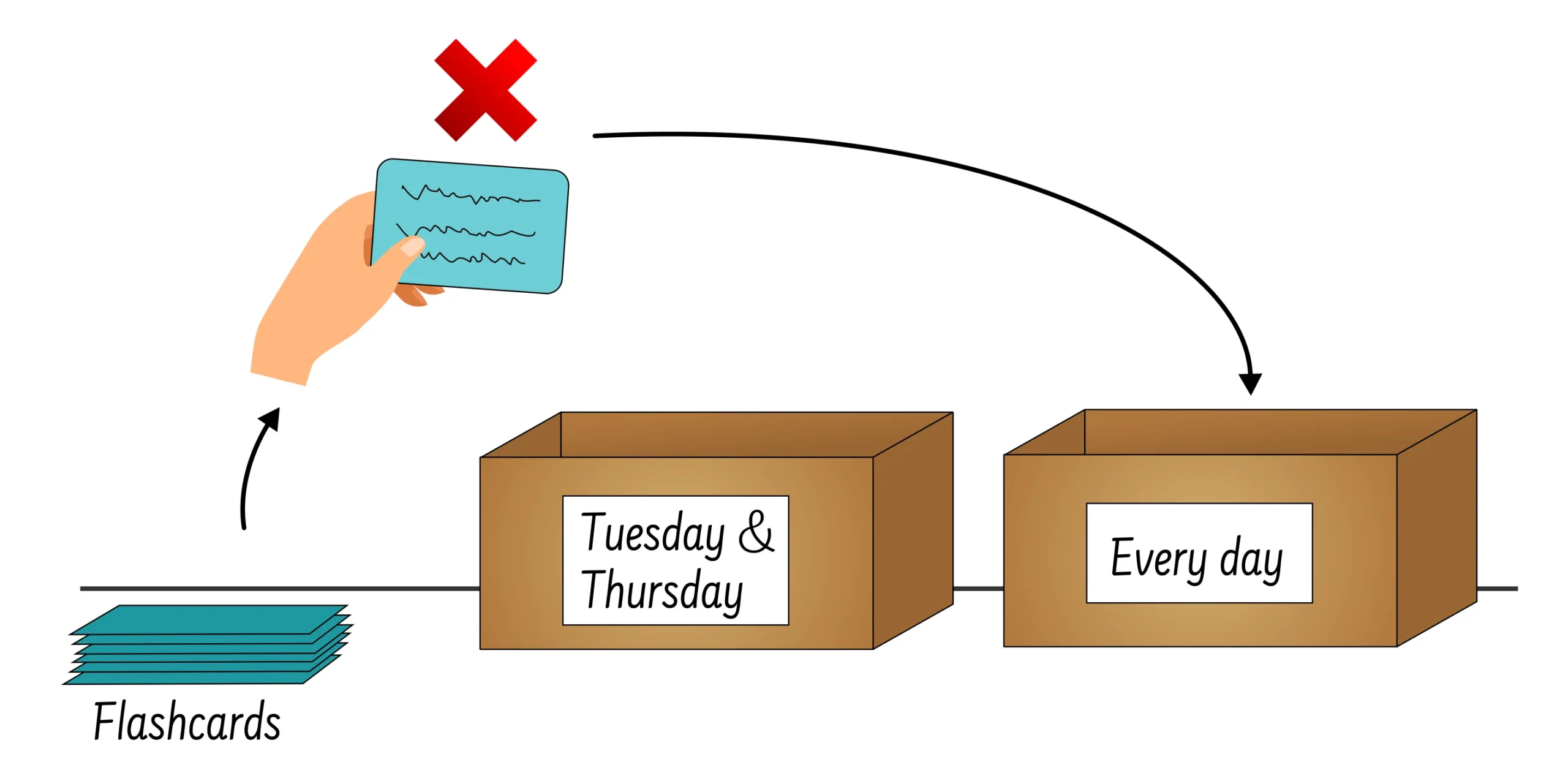
By sorting the cards in this way, you’ll ensure that you’re spending more time reviewing the cards you need to work on. After going through all the cards once, they should be sorted into one of these two categories (you won’t have any in the Friday group yet).
Day 2
On Tuesday, you’ll come back to your flashcards, which are now sorted into the Every Day and Tuesday and Thursday groups.
First, you’ll look at the cards in your Every Day group. These are the tough ones that you had trouble with the day prior. If you’re still unable to recall the correct answers for them, no worries! Just put them back in the Every Day group. The ones that you get correct, however, will become your new Tuesday and Thursday pile.
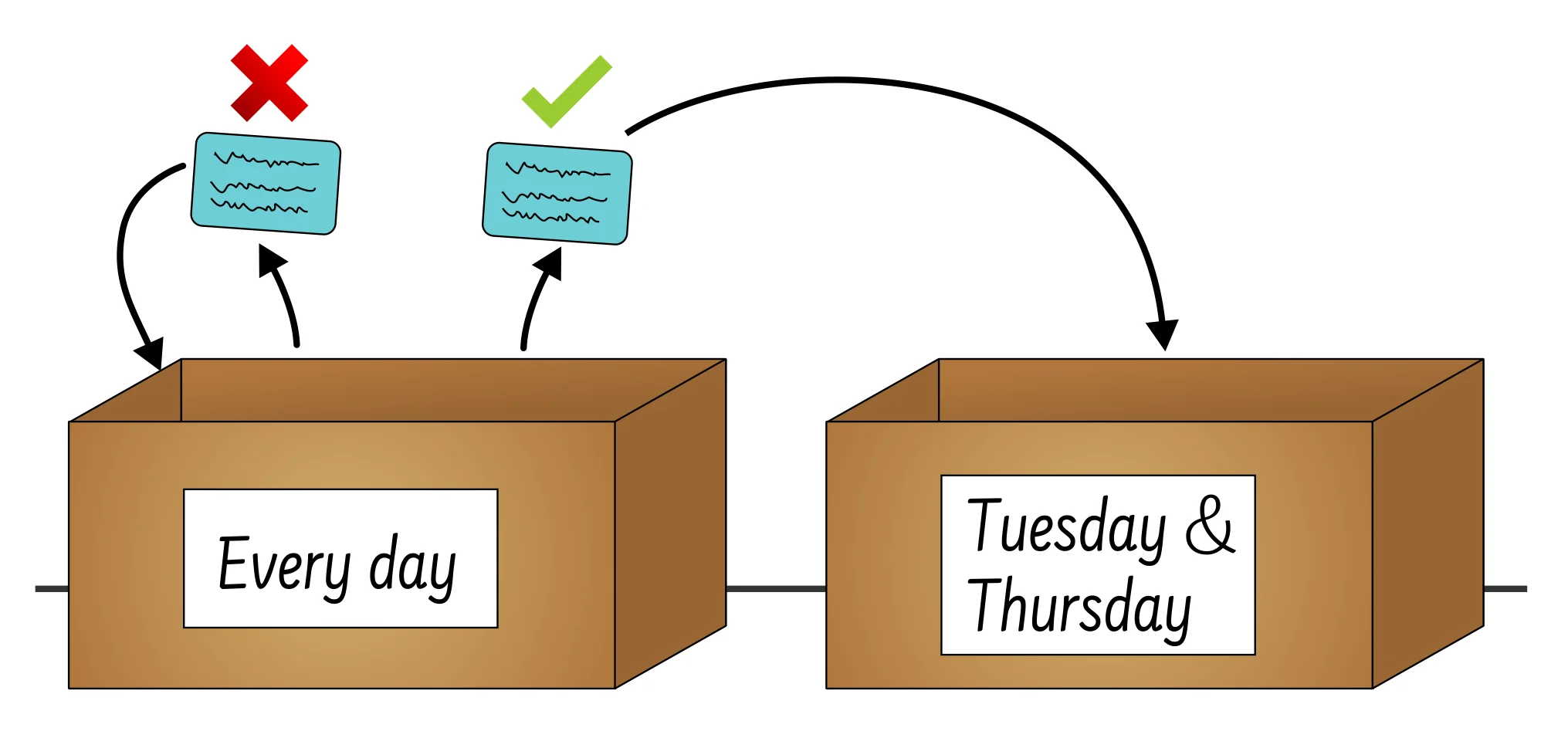
Next, look at yesterday’s Tuesday and Thursday pile. If you get them correct again, they’ll move up to the Friday pile. However, if you blank on the right answer this time around, you’ll put them with the others in the Every Day pile!
At this point, your cards should be split into 3 groups.
Day 3
You’re probably noticing the pattern here! On any given day, you’ll review cards as indicated by the group names. Wrong answers go to the Every Day group, while correct answers move “up” one group.
Since day three is Wednesday, you won’t be looking at the Tuesday and Thursday group or the Friday group. Just look through your Every Day group. Any cards you get correct will get moved to the—you guessed it—Tuesday and Thursday group.
Day 4
Now that it’s Thursday, you’ll look at both the Every Day group and the Tuesday and Thursday group. Correct answers move up one group, and incorrect answers go in the Every Day group.

Day 5
Now that you’ve reached Friday, you’ll review both the Every Day cards and the Friday cards.
The Friday cards are the ones you are most confident in, so you may not have looked at them for several days! If you still know what they say, they will stay in the Friday group. If you’ve forgotten, they’ll move all the way back down to the Every Day group.
Meanwhile, any Every Day cards you get right will move up to Tuesday and Thursday, as usual.

From there, you repeat the process on the following Monday.
Advantages of the Leitner System
The Leitner System has many advantages and benefits. Let’s go over a few of the reasons for integrating the Leitner System into your studying habits.
Daily Review
Eating 21 meals on Monday and then not eating another bite all week wouldn’t go super well for you, and, it’s the same with studying. An ineffective way to study would be to procrastinate even looking at your flashcards, then stare at them for hours the night before your test.
The Leitner System helps you process the information in your flashcards by incorporating the review into your daily study routine. Going through the flashcards once every day will be significantly more effective than going through them five times at the end of the week!
And just like food, these bite-sized learning sessions will be much easier for your brain to digest.
Active Stimulation
Over the years, I’ve watched hundreds of hours of football games. So why am I not in the NFL?
Well, never playing football in my life is certainly a major factor. Participating actively in something will always be more impactful than passively participating, and it’s the same with studying! Just reading or watching videos doesn’t thoroughly work the information into your brain.
By reviewing with flashcards every day, we work actively with the information, strengthening our active recall abilities.
Chunking
You may have heard the old saying, “There is only one way to eat an elephant: one bite at a time.” This quote is literally true—nobody could eat an elephant in a single bite, other than maybe Godzilla!
But the true meaning of the saying is that daunting tasks become more realistic if they are simply broken up into parts. If you’ve got a massive stack of flashcards, covering dozens of vocabulary terms, your head might be swimming by the time you’re halfway through! Our brains can’t take in all of the information at once, so we benefit greatly from the spaced repetition of the Leitner System.
Reducing Boredom
How do you feel when you’re being lectured about something you already understand? If you’re like me, you probably said “bored!”
And what do our brains do when we’re bored? They wander! They wander away to other places, where we begin thinking about what’s for lunch, or what’s for dinner… or what we had for breakfast… I can almost smell the food now… but wait a minute, we’re studying! We need to focus!
Leitner System Tips
Before we wrap up, here are some tips for a successful Leitner System.
High-Quality Flashcards
With this system, you’re going to be looking at your flashcards many times, so don’t skimp out on the quality. Take some time making great flashcards at the beginning to set yourself up for an optimal process later.
Make sure you’re keeping your writing concise; if you find yourself writing an entire paragraph on the back of a card, that might mean the concept is too complex for a single flashcard. You should split it into a few cards if possible.
If you’re a visual learner, don’t be afraid to include images or diagrams. Proofread your flashcards to avoid careless errors, and try techniques like color-coding if you’re dealing with a wide range of information.
Stay Vigilant
The Leitner System depends on your commitment! Don’t skip a day, even if you’re finding your focus being pulled to other topics or activities.
Going through your flashcards once doesn’t take that long, and keeping it consistent is an important part of digging the information into your long-term memory.
Scheduling Reviews
Including your flashcard review in your study schedule will help you stay on top of things. This also helps you look at the big picture, ensuring that you’re making progress towards your long-term goals, like acing big tests!
Adapting the System
The ritual of performing the Leitner System may be rigid, but the system itself is quite adaptable. You can alter the specific days of the week to better fit your schedule. You can also alter how you label each group; some folks opt to label them as the “Easy,” “Medium,” and “Hard” groups, with cards progressing toward the “Easy” box, which is ultimately reviewed weekly.
You can also experiment with a higher number of boxes. Once you’ve mastered a topic, you may place these cards in a fourth box to be reviewed only every other week, for example. This makes sure that you’re still occasionally brushing up on topics throughout the semester, setting you up to absolutely crush your final!
You can also experiment with only two boxes, “Hard” and “Easy,” choosing a frequency of review that works for your schedule.
Essentially, every parameter of the system can be altered to fit your life. The way we outlined the system puts Friday as an important review day, but if you’ve got a club meeting taking up major time on Friday, you can push that to Saturday. Just make sure you’re setting that as part of your system ahead of time; it’s important that you set the parameters and then stick to them.
Well, that’s our video on the Leitner System for flashcards! I’d encourage you to give this system a try. Customize it as much as you need, and use it for as many subjects as you need.
If you stick to it, you may find better grades “in the cards” for you!
Thanks for watching, and happy studying!
